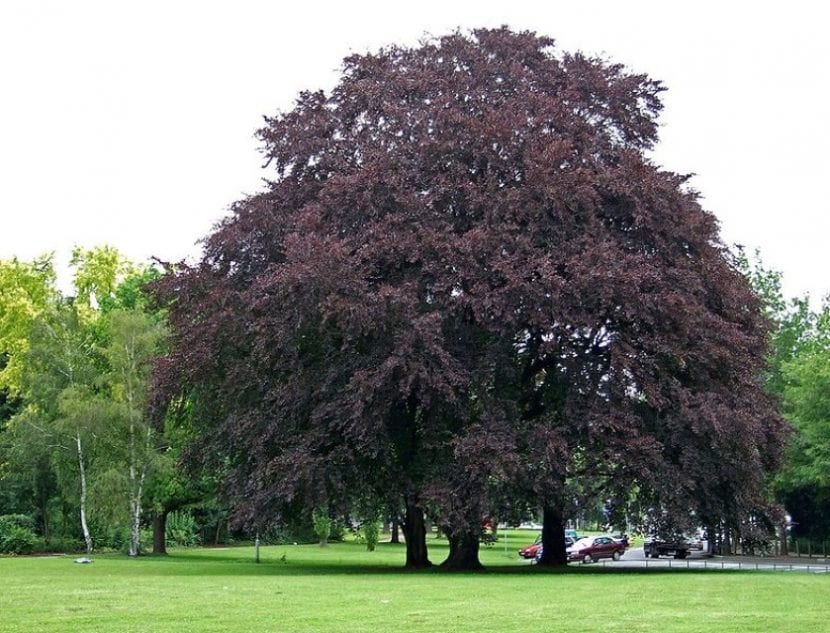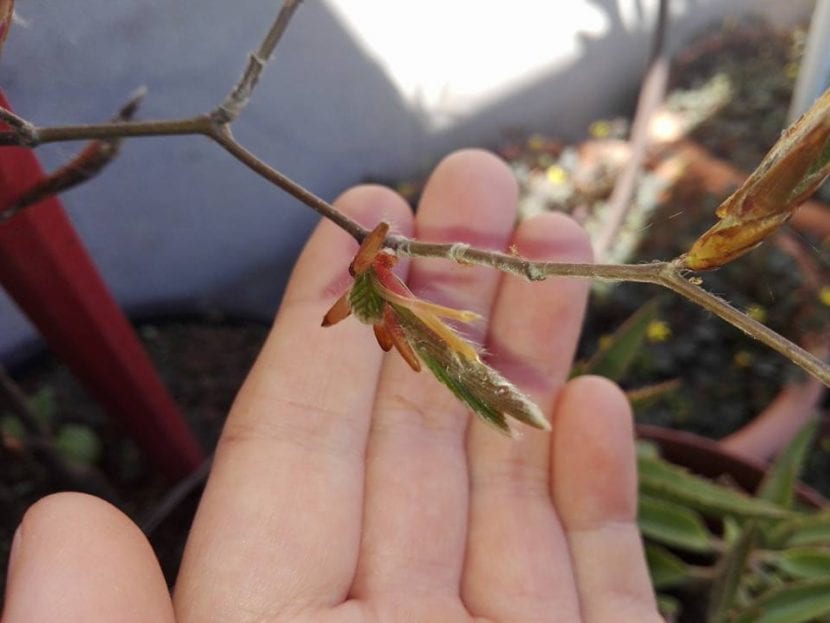
Image - Treeseedonline.com
If there's one cool-weather tree that has purple leaves that's really impressive, that's the one. Red leaf beech. Its scientific name is Fagus sylvatica 'Atropurpurea', and it is an exceptional one to have in a garden.
It does not require much careAlthough if the weather is not suitable, I can tell you that it is quite demanding. But with these tips and tricks you will surely succeed sacar.
Characteristics of the Red Red Beech
Our protagonist is a deciduous tree belonging to the Fagaceae family that is found naturally in the forests of almost all of Europe. In Spain you can see it in the extreme north of the peninsula, through Galicia, Asturias, or the Pyrenees. It usually forms forests called beech or beech trees that in autumn must be beautiful, with their purple almost black tones.
It is characterized by having a maximum height of 40 meters, a straight trunk that branches quite high. Its crown is usually oval in the upper part, although if it grows in the forest you will see it more cylindrical in shape. Its beautiful leaves are simple, alternate, bright reddish-green when young and purple when they finish developing..
It is a monoecious plant, which means that there are female feet and male feet. The first appear in groups of one to three, and are yellowish first and grayish-brown later; the latter appear grouped in globose inflorescences. The fruit contains 1-3 seeds shaped like a tetrahedron, and they are edible (they have a sunflower seed flavor).
How do you take care of yourself?

Budding of my Red Leaf Beech
If you want to have a specimen in your garden, take note:
- Location:
- If the weather is cool: in full sun.
- If the weather is warm: in semi-shade.
- Soil or substrate:
- Soil: it has to be slightly acidic (pH 5-6), with good sewer system and rich in organic matter.
- Substrate: highly recommended to use akadama, especially if the weather is warm.
- Irrigation: frequent. In spring and summer it should be watered every 2-3 days, and the rest of the year every 4-5 days.
- Subscriber: from spring to summer with organic fertilizers, such as guano, earthworm humus: manure.
- Planting time: in spring, after the risk of frost has passed.
- Multiplication: by seeds (stratification cold for three months), cuttings and grafts in autumn.
- Rusticity: supports up to -17ºC.
What did you think of this tree?
Magnificent tree, but when it comes to watering, I want to know how many times a week you have to water it, not the days
I liked it and it was useful to make a decision
Thank you very much, Rafaela.